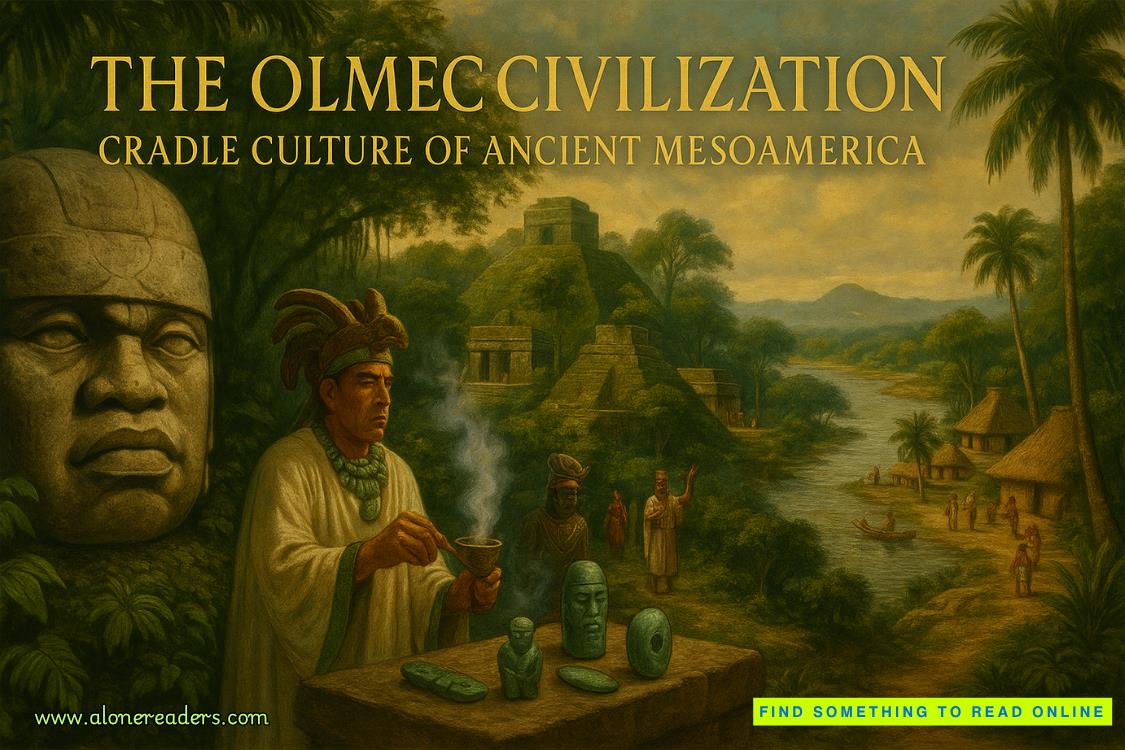Page 42 of My Ishmael (Ishmael 3)
“What blue-collar and white-collar workers actually retain of their schooling doesn’t much matter—in either their working lives or their private lives. Very, very few of them will ever be called upon to divide one fractional number by another, parse a sentence, dissect a frog, critique a poem, prove a theorem, discuss the economic policies of Jean-Baptiste Colbert, define the difference between Spenserian and Shakespearean sonnets, describe how a bill passes Congress, or explain why the oceans bulge on opposite sides of the world under the influence of tidal forces. Thus, if they graduate without being able to do these things, it really doesn’t matter in the slightest. Postgraduate work is obviously different. Doctors, lawyers, scientists, scholars, and so on actually have to use in real life what they learn in graduate school, so for this small percentage of the population schooling actually does something besides keep them off the job market.
“Mother Culture’s deception here is that schools exist to serve the needs of people. In fact, they exist to serve the needs of your economy. The schools turn out graduates who can’t live without jobs but who have no job skills, and this suits your economic needs perfectly. What you’re seeing at work in your schools isn’t a system defect, it’s a system requirement, and they meet that requirement with close to one hundred percent efficiency.”
“Ishmael,” I said, and our eyes met. “You worked this out all by yourself?”
“Yes, over several years, Julie. I’m a very slow thinker.”
School Daze II
Ishmael asked if I’d watched any younger siblings grow up from infancy, and I told him no.
“Then you wouldn’t know from experience that small children are the most powerful learning engines in the known universe. They effortlessly learn as many languages as are spoken in their households. No one has to sit them down in a classroom and drill them on grammar and vocabulary. They do no homework, they have no tests, no grades. Learning their native languages is no chore at all, because of course it’s immensely and immediately useful and gratifying to them.
“Everything you learn during these early years is immensely and immediately useful and gratifying, even if it’s only how to crawl or how to build a tower of blocks or how to bang a pot with a spoon or how to make your head buzz with a piercing screech. The learning of small children is limited only by what they’re able to see, hear, smell, and get their hands on. This lea
rning drive continues when they enter kindergarten, at least for a while. Do you remember the sort of things you learned in kindergarten?”
“No, I can’t say that I do.”
“These are things Rachel learned twenty years ago, but I doubt if they’re any different nowadays. She learned the names of primary and secondary colors—red, blue, yellow, green, and so on. She learned the names of basic geometric shapes—square, circle, triangle. She learned how to tell time. She learned the days of the week. She learned to count. She learned the basic units of money—penny, nickel, dime, and so on. She learned the months and the seasons of the year. These are obviously things everyone would learn whether they studied them in school or not, but they’re still somewhat useful and somewhat gratifying to know, so most children have no difficulty learning them in kindergarten. After reviewing all this in grade one, Rachel went on to learn addition and subtraction and to master beginning reading skills (though in fact she’d been reading since she was four years old at least). Again, children generally find these to be useful and gratifying studies. I don’t intend to go through the entire curriculum in this way, however. The point I want to make is that, in grades K through three, most children master the skills that citizens need in order to get along in your culture, commonly characterized as the ‘three R’s’—reading, writing, and arithmetic. These are skills that, even at age seven and eight, children actually use and enjoy using. A hundred and fifty years ago this was the citizen’s basic education. Grades four through twelve were added to the curriculum in order to keep youngsters off the job market, and the skills taught in these grades are the ones most students find to be neither useful in their lives nor gratifying to master. Addition, subtraction, multiplication, and division of fractional numbers exemplify these skills. No children at all (and very, very few adults) ever have occasion to use them, but they’re available to be added to the curriculum, and so they have been. They take up months and months of time, and this is all to the good, since the whole point of the exercise is to take up the students’ time. You’ve mentioned other subjects, like civics and earth sciences, which present plenty of opportunity for time-consuming activities. I remember that Rachel was required to memorize state capitals for some course or other. My favorite example of the tendency came to my notice when she was in the eighth grade. She actually learned to fill out a federal income-tax form, something she wouldn’t need to do in actual life for at least five years, by which time she obviously would have forgotten the form, which would by then be substantially different anyway. And of course every child spends years studying history—national, state, and world, ancient, medieval, and modern—of which they retain about one percent.”
I said, “I would have thought you would endorse the teaching of history.”
“I do very much endorse it. I endorse the teaching of everything, because everything is what children want to know. What children very deeply want to know of history is how things got to be this way—but no one in your culture would think of teaching them that. Instead they’re overwhelmed with ten million names, dates, and facts they ‘should’ know, but that vanish from their heads the moment they’re no longer needed to pass a test. It’s like handing a thousand-page medical text to a four-year-old who wants to know where babies come from.”
“Yeah, that’s absolutely true.”
“You, here in these rooms, are learning the history that matters to you. Isn’t that so?”
“Yes.”
“Will you ever forget it?”
“No. Not possibly.”
“Children will learn anything they want to learn. They’ll fail at learning how to figure percentages in the classroom but will effortlessly learn how to figure batting averages (which are of course just percentages). They’ll fail at learning science in the classroom but, working at their personal computers, will effortlessly defeat the most sophisticated computer security systems.”
“True, true, true.”
“If you monitor the right magazines, newspapers, or television programs, you’ll see a report at least once a week of some new scheme or other designed to ‘fix’ your schools. What people mean by fixing the schools is making them work for people instead of just detaining them for twelve years, then releasing them unskilled onto the job market. In order to create something that works for people, the people of your culture think they have to invent something from scratch. It never occurs to them that they may be trying to reinvent the wheel. In case this expression is new to you, ‘reinventing the wheel’ means struggling very hard to duplicate a breakthrough that was actually made long ago.
“Among tribal peoples, the educational system works so well that it requires no effort on anyone’s part, inflicts no hardship on learners, and produces graduates who are flawlessly educated to take their place in their particular society. To speak of it as a system will be misleading, however, if you expect to see huge buildings staffed by warders and their supervisors, under the direction of local and regional school boards. No such things exist. The system is completely invisible and immaterial, and if you were to ask a tribal people to explain it, they wouldn’t even know what you were referring to. Education occurs among them constantly and effortlessly, which means they’re no more aware of its functioning than they are of the functioning of gravity.
“Education occurs among them as constantly and effortlessly as education occurs in a household where there’s a three-year-old. Unless you confine it to a crib or a playpen, there’s simply no way to stop a three-year-old from learning. A three-year-old is a questing beast with a thousand arms probing everywhere. It must touch everything, smell everything, taste everything, turn everything upside down, see how it looks sailing through the air, see how it feels when swallowed or pressed into an ear. The four-year-old is no less thirsty for knowledge, but it no longer has to repeat the experiments of the three-year-old. It has already touched, smelled, tasted, turned upside down, flung, and swallowed everything it needs to. It’s ready to move onward and outward—as is the five-year-old, the six-year-old, the seven-year-old, the eight-year-old, the nine-year-old, the ten-year-old, and so on. But it’s not allowed to do this in your culture. This would be too messy. Starting with age five, the child must be restrained, confined, and compelled to learn not what it wants to learn but what your state legislators and curriculum writers agree it ‘should’ learn, in lockstep with all other children its age.
“Not so in tribal societies. In tribal societies, the three-year-old is free to explore the world around it as far as it likes, which is not as far as it will go when it’s four, five, six, seven, or eight. There simply are no walls shutting the child in or out at any age, no doors closed against it. There is no age when it ‘should’ learn a given thing. Nor would anyone ever dream of giving thought to such a thing. Ultimately, all the things grown-ups do are fascinating to a child, and it eventually and inevitably wants to do them itself—not necessarily on the same day as every other child, nor in the same week or the same year. This process, Julie, isn’t cultural, it’s genetic. I mean that children don’t learn to imitate their parents. How could such a thing be taught? It’s hardwired into children to imitate their parents. They’re born wanting to imitate them, in exactly the same way that ducks are born wanting to follow the first thing they see moving, which is usually their mother. And this hardwiring continues to operate within the child … until when, Julie?”
“What?”
“The child craves to learn how to do every single thing its parents do, but this craving eventually disappears. When?”
“Lord, how could I know that?”
“You know it perfectly well, Julie. This craving disappears with the onset of puberty.”
“Wow,” I said. “It sure does.”
“The onset of puberty signals the end of the child’s apprenticeship to its parents. It signals the end of childhood itself. Again, this isn’t cultural, it’s genetic. In tribal societies, the pubertal youth is understood to be ready for initiation into adulthood—and must be initiated into adulthood. You can no longer expect this person to want to imitate adults. That craving has vanished and that phase of life is over. In tribal societies, they make a ceremonial acknowledgment of this, so everyone is clear about it. ‘Yesterday these people were children. Today they’re adults. That’s it.’















